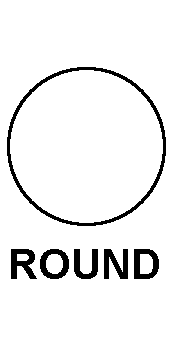6150015264908
Price Quote Get an up to date pricing and availability quote for this product. Order online or over the phone.
Quality Commitment
Serving our customers with quality and safety first.
- AS9120 Certified
- Audited supply chain
- ITAR Registered
- DDTC Registered
- HAZMAT Certified
- Customer service objectives
- Every product 100% inspected

6150-01-526-4908 Specification Set by the OEM (see RNCC code 3)
round
4940-01-471-6396
2
braid, tubular 2nd conductor
cable assy, analog probe
PL20-5 both ends single conductor
14949 both ends single conductor
item shall have 3 sleeve markers "a" being 1 to 1.5in. from first end and stamped P1 to J4 of A31U17023; "b" being centralized and stamped A31U17934-1 mfr 26512; "c" being 1 to 1.5in. from second end and stamped P2 to J1-F of A31U17594; all "hot stamp" done per GM13A with .08 inch high characters; coax is M17/113-RG316
plastic fluorinated ethylene propylene 4th position jacket all conductors
Cross Reference Parts Part numbers that meet the specification outlined on this page and set by the OEM
Identification Item Identification Guide (IIG) and Item Name Code (INC)

Definition Definition of approved item name (AIN): "CABLE ASSEMBLY,SPECIAL PURPOSE,E"
A definite continuous length of cable, special purpose, electrical, having one or more ends processed or terminated in fittings which provide for connection to other items. Excludes items having branches or forks. Excludes lead, test and cable and conduit assembly, electrical.
6150-01-526-4908 Material Hazmat, Precious Metals, Criticality, Enviroment, and ESD
Indicates there is no data in the hmirs and the nsn is in a fsc not generally suspected of containing hazardous materials.
Item does not contain precious metal.
No known electrostatic discharge (esd) or electromagnetic interference (emi) sensitivity.
Represents items with no adp components
The item does not have a nuclear hardened feature or any other critical feature such as tolerance, fit restriction or application.
Identification Codes
HMIC: Hazardous Material Indicator Code. A one position code that identifies a hazardous item.
PMIC: Precious Metal Indicator Code. A one position code which identifies items that have precious metals as part of their content. precious metals are those metals generally considered to be uncommon, highly valuable, and relatively superior in certain properties such as resistance to corrosion and electrical conductivity.
ESD: Electrostatic Discharge. Indicates if an item is susceptible to electrostatic discharge or electromagnetic interference damage. electrostatic discharge damage occurs when an accumulation of static electricity generated by the relative motion or separation of materials is released to another item by direct contact. electromagnetic interference damage occurs when an item comes into proximity with an electrostatic or magnetic field.
ENAC: Enviromental Attribute Code. Identifies items with environmentally preferred characteristics.
CRITL: Criticality Indicator Code. Indicates an item is technically critical by tolerance, fit, application, nuclear hardness properties, or other characteristics.






